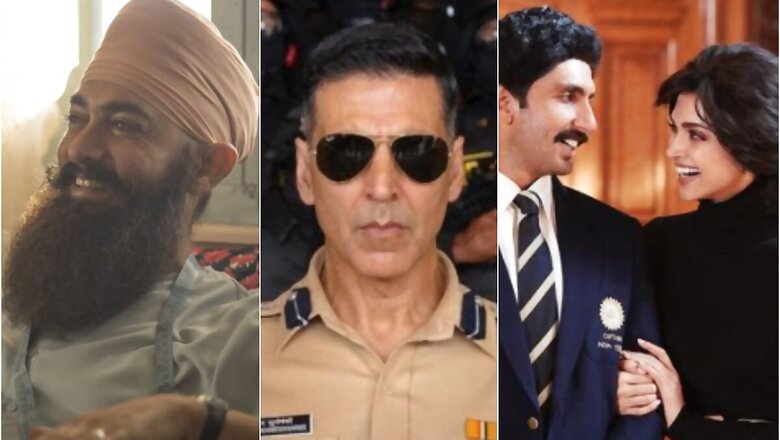
views
How many times have you discussed or heard others discussing Shah Rukh Khan, Aamir Khan, Salman Khan, Akshay Kumar, Hrithik Roshan, Ajay Devgn, Ranveer Singh or Ranbir Kapoor lately? More importantly, how many times have you missed them since they went off the glamour billboards and the giant, invasive publicity machine that surrounds us?
Chances are, you have not.
COVID has killed the superstar. The uniquely skewed economics of Indian cinema had created the kind of stardom that depended solely on extravagant marketing and control over demand and supply to gloss over tired scripts, bad acting, and forgettable direction.
Only the big houses and filmy cartels could afford massive marketing budgets and a stranglehold over distribution and screening. Top male stars walked away with more than half the money spent on producing the entire movie, with their fee going up to Rs 80 crore and beyond. The smaller budget films, which often relied on better scripts and performances, could not match even a fraction of that marketing spend and reach.
This economics allowed the superstar to grossly over-earn and underperform. That happy time may be over.
COVID-19 and the spate of lockdowns have biologically bombed that economics. Theatres are shut for months. Baroque promotions with events, tours, and mall and media visits cannot happen because of social distancing. And digital OTT platforms have levelled the playing ground.
Of the hallowed lot, only Salman Khan dared to release his ‘Radhe’ on OTT. These platforms don’t reveal their figures, but from most accounts, the film did not leave a mark.
There are several reasons why the big hero and the big director do not dare putting their work on a digital platform.
First, they cannot muscle the smaller players out of an OTT platform by monopolising distribution. The consumer does not have to push down what the multiplexes and single screen force on them. He or she can exercise their choice on which content to watch.
Second, the big, physical marketing promotions are off the table, for now. Again, super-productions can’t bully the small fish out of the water.
Third, audiences behave in a particular manner when they watch a movie in a mob, willingly partake in the shallow, mass fantasy ritual. When they are watching the same movie alone or with family or close friends—on TV, laptop or mobile screens—they tend to behave more rationally, choosing deeper, better content over it.
Fourth, complacent in their billion-dollar cocoons, most big stars and directors have not upped their game. Unlike a Leonardo DiCaprio, Kate Winslet, Tom Hanks or Kevin Spacey who can straddle both popular performances and highly angular roles with equal elan, our mainstream deities are stuck in their own caricatures.
COVID will wane one day. Theatres will open. But will the superstar return with the same swag and undeserving audacity?
Unlikely.
Digital OTT platforms are here to stay. With increasing smartphone and computer penetration in India’s remotest parts, filmmakers and content creators with smaller budgets and brighter ideas will take away a major slice of theatre audiences. Animation, special effects and emerging virtual reality and other technologies will minimise time on the sets and usher ‘virtual production’.
Instead of the eight-week gap between big screen and digital premiere of films, Bollywood will be forced to release on a streaming platform within two or three weeks of its theatrical opening. This will considerably blunt the bullying by distributors and exhibitors.
Today, those long relegated to the middle benches as ‘character actors’—Manoj Bajpayee, Nawazuddin Siddiqui, Pankaj Tripathi, Pratik Gandhi, Radhika Apte, Jaideep Ahlawat, Rasika Dugal and others—are household names. They have broken into the galaxy of stars because of sheer talent.
In the post-COVID, increasingly digital world of cinema and entertainment, it is the Khans, Chopras, Johars and Kapoors who need to catch up, measure up, if they are to stay in the strobe light of public memory.
Read all the Latest News, Breaking News and Coronavirus News here.

















Comments
0 comment